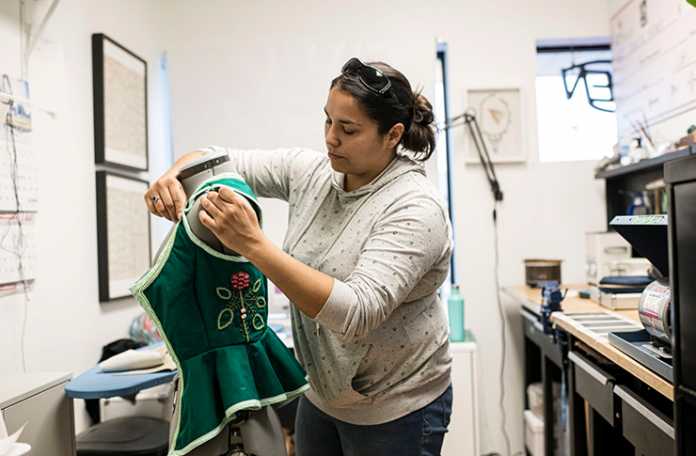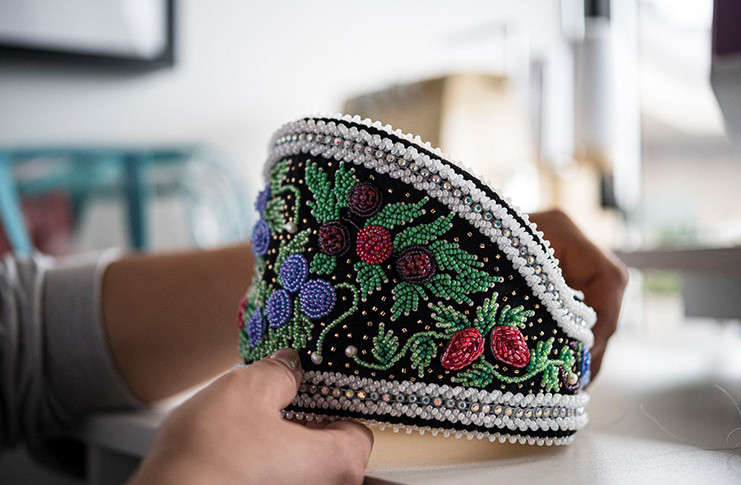
Dakota Brant works on a piece from the ‘In the Woods’ collection at Sapling & Flint in Ohsweken, a Six Nations of the Grand River in the Ontario village of Ohsweken, located on Six Nations of the Grand River territory, Dakota and Jesse Brant are creating jewellery for customers around the world.
Through their online store and gallery shop, Sapling & Flint, the twin sisters have created an opportunity to be their own bosses, support their families and remain in their home village.
Indigenous entrepreneurs like the Brant sisters are increasingly turning to e-commerce as a way to stay in their communities and build businesses, simultaneously creating new jobs and economic opportunities for others on reserve.
“E-commerce has given me an opportunity to pursue the things that I’m passionate about while being able to live in the place that I want to live and to thrive in,” Dakota Brant says.
The sisters devoted themselves to Sapling & Flint full-time in 2017 after three years of running it as a hobby, selling jewellery, notebooks and accessories.
Ms. Brant has a master’s degree in community planning from the University of British Columbia, and her sister is a trained jeweller who studied at George Brown College in Toronto.
Ms. Brant has lived and worked elsewhere. She spent more than a decade as a private consultant, working in Indigenous community engagement.
But with the rise of e-commerce, the member of the Mohawk Nation has embraced an on-reserve opportunity – and way of life – that did not previously exist.
“Having the business allows for us to be our own bosses, manage work hours and sick days as our children need them and to be uncompromising of our cultural life,” Ms. Brant says.
Both her child and her sister’s two children speak Mohawk and are closely connected to their culture and community.
Tabatha Bull, chief operating officer at the Canadian Council for Aboriginal Business (CCAB), says that while few of the council’s members operate e-commerce businesses on reserve, she sees “huge potential” in such a model.
She points to converging factors, including the fact Indigenous people are more likely to start their own businesses than non-Indigenous people; a fast-growing, young Indigenous population; commitments to expand broadband internet on First Nations communities; and efforts from companies such as e-commerce platform Shopify supporting Indigenous entrepreneurs.
“There’s definitely going to be a huge surge of opportunity for new Indigenous businesses to grow,” Ms. Bull says.
Additionally, she says, the demand for Indigenous products within Canada and beyond is booming.
A June report by the CCAB and the Office of the Chief Economist of Global Affairs Canada found that 24 percent of Indigenous-owned small and medium-sized enterprises in Canada export – twice the national average among such businesses.
“From a general consumer point of view, there is definitely an interest in buying sustainable and buying local and ensuring the work is authentic,” Ms. Bull says.
Source: theglobeandmail.com


















